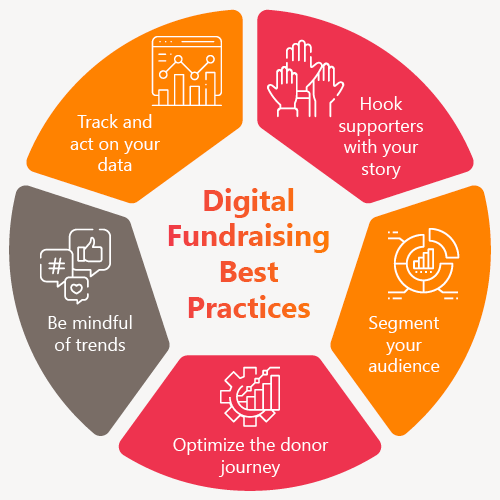Creative Nonprofit Fundraising Ideas: Boost Donations and Engagement
Creative Nonprofit Fundraising Ideas: Boost Donations and Engagement
Blog Article
The Duty of Community Engagement in Nonprofit Fundraising: Structure Lasting Relationships for Lasting Assistance
Community interaction is increasingly recognized as a vital element of successful not-for-profit fundraising. The techniques and approaches used to engage areas vary commonly, increasing crucial concerns concerning effectiveness and influence.
Understanding Community Interaction
Area interaction is a vital component of effective not-for-profit fundraising efforts. Nonprofits need to identify key stakeholders-- such as community members, neighborhood organizations, and various other companies-- to produce efficient engagement strategies.
Effective neighborhood involvement is predicated on energetic listening and responsiveness to the needs and interests of the area. This procedure involves getting comments, recognizing community characteristics, and making sure that the organization's mission lines up with neighborhood top priorities. Engaging the neighborhood can take different kinds, including public meetings, volunteer possibilities, and partnership efforts, each designed to encourage participation and financial investment in the organization's objectives.
Furthermore, neighborhood involvement ought to be come close to as an ongoing discussion instead of an one-time effort. By cultivating an inclusive setting where community voices are listened to and valued, nonprofits can construct a strong foundation for future fundraising undertakings. Ultimately, a deep understanding of neighborhood engagement empowers organizations to develop genuine links that improve their total performance and sustainability.
Advantages of Solid Relationships
Solid partnerships created through community interaction return countless benefits for not-for-profit fundraising efforts. Firstly, these relationships foster count on and reputation, important elements in encouraging donors to contribute. When potential advocates see a not-for-profit proactively included in their community, they are a lot more most likely to count on its objective and influence.

In addition, these partnerships promote reliable interaction. Nonprofits can utilize their links to share stories of impact, updates, and requires, making certain that supporters stay informed and engaged. This open line of interaction not only enhances bonds however additionally urges referral promotion, expanding the not-for-profit's reach.
Finally, strong area ties can bring in brand-new partners and sponsors. Individuals and businesses are extra likely to line up with organizations that demonstrate significant community participation, providing additional sources and support that can dramatically boost fundraising capabilities. Hence, growing robust connections through community involvement is integral to a not-for-profit's long-term fundraising success.
Techniques for Reliable Interaction
Just how can nonprofits properly engage their neighborhoods to improve fundraising initiatives? Normal updates, involving content, and calls-to-action can galvanize neighborhood interest and involvement.
2nd, organizing neighborhood occasions, such as workshops, volunteer opportunities, or fundraising drives, facilitates in person interaction, allowing nonprofits to showcase their influence and efforts. These occasions not only raise funds but also grow relationships and enable community participants to engage straight with the reason.
Third, implementing personalized interaction techniques can improve involvement. Customizing messages to particular benefactor segments based on interests and previous payments fosters a feeling of belonging and investment in the company's objective.
Lastly, developing collaborations with local companies and community leaders can magnify outreach initiatives. Collaborative initiatives can improve exposure and reputation, showing a cumulative dedication to the area's health. By incorporating these approaches, nonprofits can construct long lasting connections that improve fundraising efforts and drive sustainable support.
Gauging Engagement Success
While involving the neighborhood is essential for effective nonprofit fundraising, gauging the efficiency of these interaction efforts is similarly important. Establishing clear metrics permits companies to assess exactly how well they are getting in touch with their target market and attaining their fundraising objectives. Key efficiency indicators (KPIs) such as donor retention prices, volunteer engagement degrees, and involvement on social media sites platforms offer concrete data for examination.

Routinely evaluating these metrics allows organizations to pivot their techniques when essential, making sure that neighborhood interaction stays straightened with their overall goal. In addition, sharing these results with stakeholders promotes openness and develops count on, encouraging more community involvement. Inevitably, a durable measurement framework not just informs future fundraising initiatives yet additionally enhances the relationship between the nonprofit and its supporters, laying the groundwork for sustainable success.
Study in Neighborhood Impact
Many study show the profound impact that area interaction can carry nonprofit fundraising success. One significant example is the "Food for Idea" effort, where a regional food bank partnered with institutions and services to host area suppers. These events not just elevated funds yet also fostered a sense of belonging amongst participants, considerably boosting benefactor retention prices.
One more engaging situation is the "Eco-friendly Spaces Job," which included neighborhood homeowners in the revitalization of urban parks. This effort not only gathered economic support from local companies yet likewise grew a volunteer base check my source that added to Source recurring upkeep and shows. The sense of ownership and pride amongst area members equated into continual contributions.
In the realm of arts, the "Art for All" campaign effectively involved regional artists and patrons to create collective art setups, causing raised presence and contributions for a regional arts nonprofit.
These examples highlight that when nonprofits focus on area participation, they can create long lasting connections that improve fundraising initiatives, making sure lasting support and fostering a lively area society. Such instances show that neighborhood engagement is not just a strategy however a crucial column of not-for-profit success.
Conclusion
Finally, neighborhood interaction is essential to the success of nonprofit fundraising efforts. By fostering strong relationships with neighborhood stakeholders, companies boost count on and reputation, resulting in improved benefactor retention and loyalty. Executing reliable involvement approaches and determining their influence guarantees that nonprofits can adapt and flourish. Eventually, a robust structure of area assistance not just amplifies fundraising potential yet additionally cultivates a culture of partnership, crucial for attaining long-lasting organizational objectives and sustaining purposeful impact.
Nonprofits should determine essential stakeholders-- such as neighborhood participants, neighborhood businesses, and various other organizations-- to develop effective engagement methods.

In final thought, community engagement is indispensable to the success of not-for-profit fundraising efforts.
Report this page